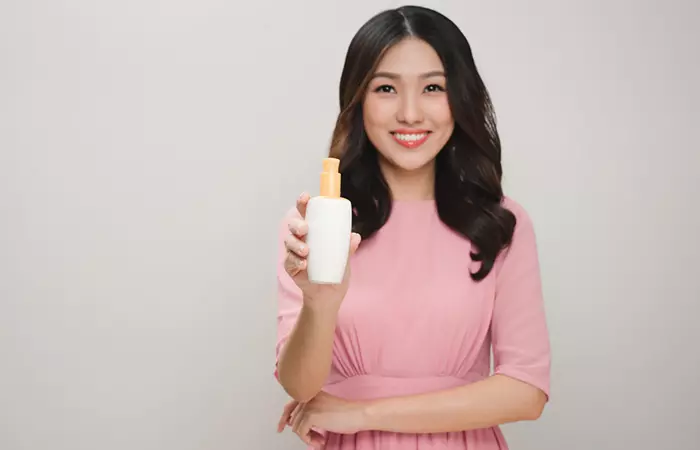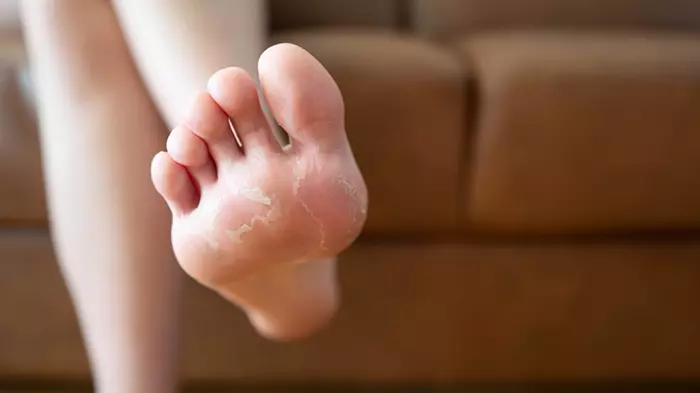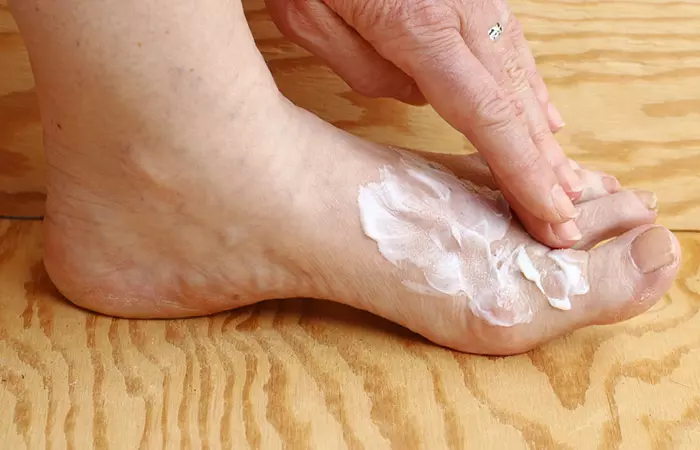What Is Undecylenic Acid?
“Undecylenic acid is a fatty acid that is used for antifungal, antibacterial, and keratolytici A medication that breaks down the excess outer skin layer to remove warts or lesions and bind moisture for healthy skin. effects. It belongs to the group of lipophilic (fat-loving) acids,” says board-certified dermatologist Dr. Paula Morgan. What Are Its Benefits? It treats athlete’s foot, jock itch, eczema, ringworm, and scalp itching. Who Can Use It? Anyone except children, pregnant women, or nursing mothers. How Often? It can be applied twice a day or as instructed by the doctor. Caution Avoid applying undecylenic acid on pus-filled sores to prevent further rashes and pain.
According to a survey conducted in the United States in 2018, around 666,235 fungal infections were diagnosed in those admitted to hospitals. 76.3% of these infections were Aspergillus, Pneumocystis, and Candida, and most of them occurred in people at higher risk of infection. Additionally, 6.6 million fungal infections were diagnosed in outpatient visits. Undecylenic acid is a common ingredient in medicated creams and lotions to treat ringworm, fungal infections, and other cutaneous conditions. However, it is never used on its own for treating fungal skin infections. You will find the salts of undecylenate (like zinc undecylenate) as an antifungal agent in OTC creams and lotions (1). Undecylenic acid also works as an antibacterial agent and an active ingredient in topical treatment. It may help in skin care in numerous ways.
Benefits Of Undecylenic Acid For Skin
The zinc salt of undecylenic acid is beneficial in treating conditions like(1):
Fungal infections (athlete’s foot,jock itchi A fungal infection on the genitals or inner thighs with a red, itchy rash caused by moisture trapped in tight-fitting clothing. ) Eczema Ringworm Other skin conditions
The zinc in it has astringent effects that reduce irritation and discomfort. It is also effective against conditions caused by Candida albicans (1),(2). It may also help in acne management. While undecylenic acid may not kill acne-causing bacteria, it may regulate certain factors that may prevent acne and foot odor. Dr. Morgan explains, “The number of bacteria on the skin increases by approximately 1000 times when we sweat. By using an antibacterial agent, we can fight and prevent bacterial infections and thus prevent acne. Undecylenic acid belongs in this category of substances. It makes the surface of the skin rougher so that the pores are closed more tightly, and dirt does not come into direct contact with them, which is the foundation of the formation of acne. It improves skin regeneration and wound healing, which can lead to a more rapid recovery from pimples and inflammations caused by them.” While undecylenic acid is not a cosmetic ingredient, it is still used in cosmetic formulations for its antifungal and other benefits. Dr. Morgan elaborates, “Undecylenic acid as fatty acid is contained in many vegetable oil products, e.g., in wheat germ oil or sunflower seed oil. In concentrations up to 10%, it can be found in sunscreens and other cosmetic products. Undecylenic acid is also an ingredient of many hair shampoos that are used for greasy hair or dandruff. As a lipophilic substance, undecylenic acid strengthens the outer skin layers and fights flaking and itching of the scalp.” The usage of undecylenic acid is not restricted to just topical ointments and antifungal creams. Therefore, it is best to follow the doctor’s or the manufacturer’s instructions for proper usage. Here are a few tips.
How To Use Undecylenic Acid
The use of undecylenic acid will differ according to the type of product. As a rule of thumb, if you are using a topical cream or powder or spray, apply it to clean and dry skin twice a day or as instructed by the doctor. However, make sure you
apply it only to the affected area(s) choose a product according to the application area (nail or skin) read the instructions and follow the precautions
The percentage of undecylenic acid in OTC products is often quite low, and such products may not work on severe infections. In that case, you might need prescription-strength products. If the OTC product you are using is not working, consult a doctor immediately. Most of the fatty acids and fatty acid salts are considered safe for use. However, there are chances of side effects.
Side Effects Of Undecylenic Acid
Dr. Morgan says, “The use of undecylenic acid is generally considered safe. The only known side effect is a slight burning sensation when the product is applied to the skin. It should not be used by pregnant women or nursing mothers.” She adds, “No interactions with other drugs have been reported with undecylenic acid, and long-term use is possible without any side effects.” The Cosmetic Ingredient Review (CIR) considers undecylenic acid and its salts safe for use. However, one person reported symptoms like swelling, itching, dryness, and oozing from the feet after using 10% undecylenic acid cream for three days. The symptoms were gone after discontinuing the medication (3). Therefore, it is crucial to follow the doctor’s instructions and take precautions while using undecylenic acid for skin conditions.
Precautions To Take While Using Undecylenic Acid
Always wash your hands before and after handling products with undecylenic acid. Undecylenic acid might not be safe for children. Consult a pediatrician before using it on kids. Do not use undecylenic acid on pus-filled sores. Consult your physician before using products with undecylenic acid. Read the labels carefully as OTC products with undecylenic acid are marketed separately for skin and nail fungal infections. Do a patch test (if using OTC products) to ensure you are not allergic to any of the ingredients in the product you are using. Always store your undecylenic acid products in a cool, dry place away from direct sunlight and humidity.
Undecylenic acid is a natural fungicide used to treat skin infections. Learn more about its uses and benefits in this video! Which is better: tolnaftate or undecylenic acid? In a study, undecylenic acid and tolnaftate were tested to determine how effective they were at killing athlete’s foot fungi. The commercial product consisting of undecylenic acid was discovered to be more efficient than the product containing tolnaftate (4). Is undecylenic acid FDA approved? Yes, undecylenic acid is FDA approved for treating various fungal infections like athlete’s foot and ringwormsi A contagious fungal infection on the skin or scalp with an itchy circular rash that occurs due to mold-like parasites living in cells. . What is 10-Undecenoic acid used for? The 10-Undecenoic acid zinc salt, a naturally occurring or artificial fungistatic fatty acid, is utilized topically in creams to treat ringwormi A contagious fungal infection on the skin or scalp with an itchy circular rash that occurs due to mold-like parasites living in cells. , eczema, and other cutaneous disorders.











